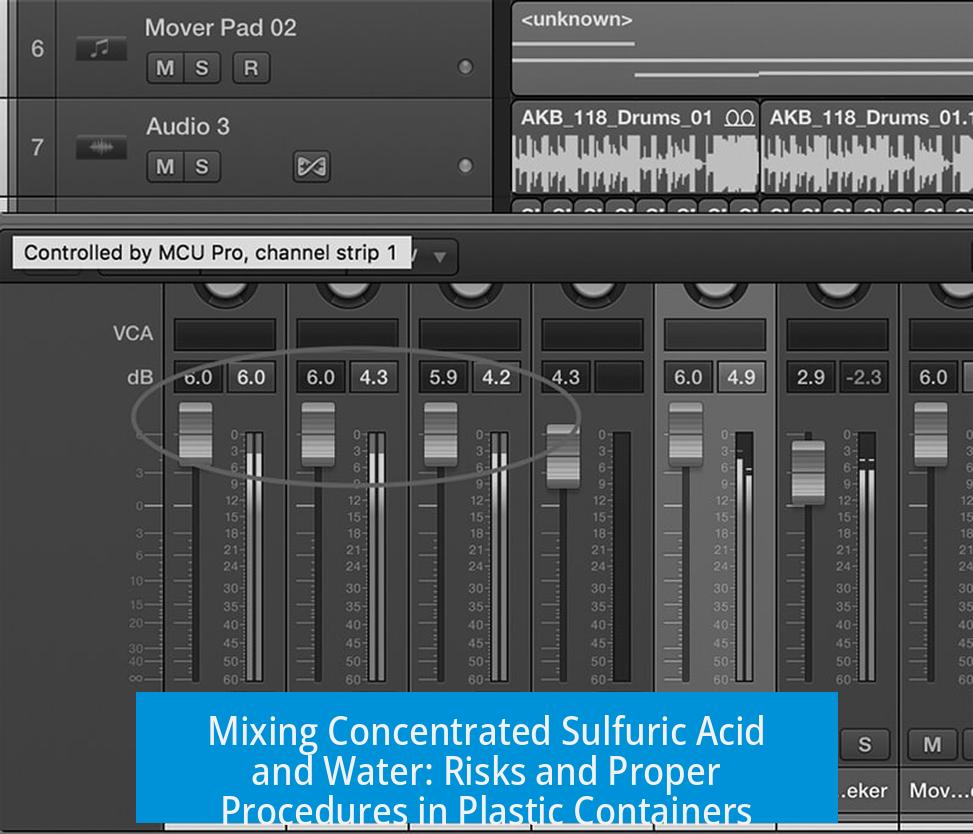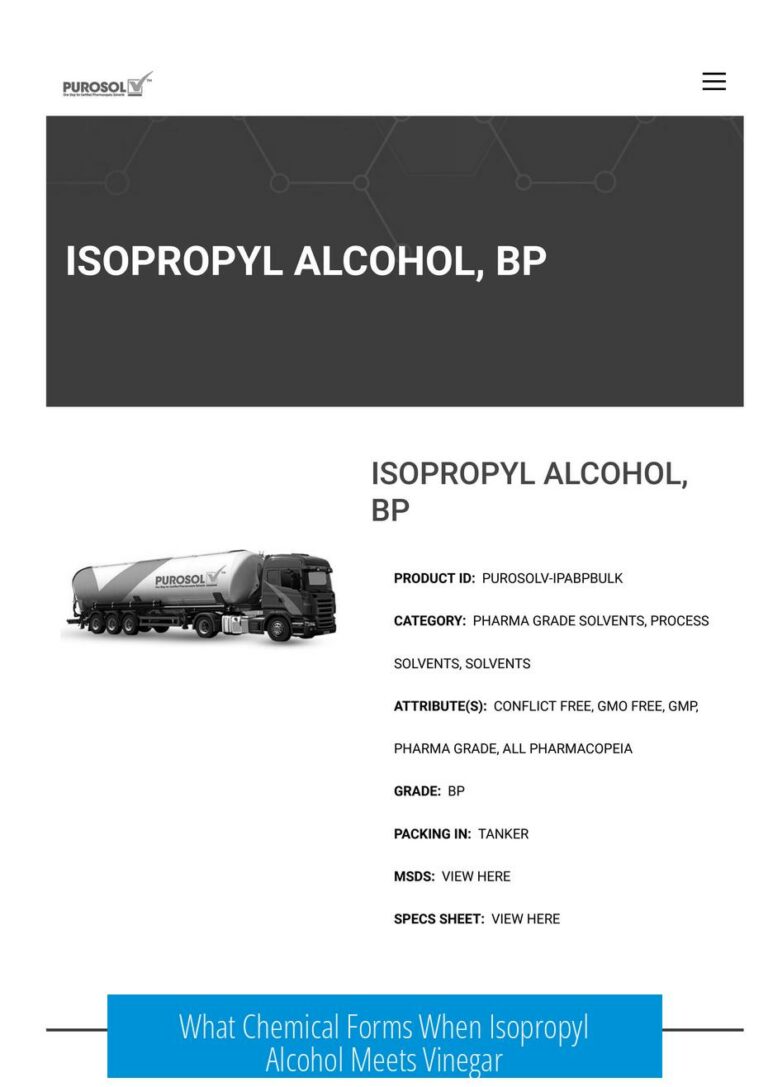This is What Happens When You Mix Concentrated Sulfuric Acid and Water in a Plastic Container

Mixing concentrated sulfuric acid with water in a plastic container produces intense heat that can melt the plastic, posing serious safety and material hazards. This reaction is highly exothermic and requires careful handling to prevent damage and injury.
Exothermic Reaction and Heat Generation

The dilution of concentrated sulfuric acid by water releases substantial heat. This heat can raise the temperature of the solution to around 60-85°C or even higher if mixed rapidly or in large volumes. The sudden temperature increase risks melting or deforming plastic containers due to thermal stress.
- The reaction is highly exothermic and fast.
- Heat buildup can exceed the melting point of common plastics.
- Temperatures during mixing can reach near boiling conditions.
Material Compatibility Issues
Plastic containers can melt or deform when exposed to the high heat from sulfuric acid dilution. For example, plastic pipes and containers may soften, weaken, or fail entirely. Plastic is generally less heat-resistant than glass, making glassware safer for acid dilution.
Reported incidents include the melting of plastic parts directly in contact with the acid and thermal shock causing shattering in glass when mixing is not done correctly.
Proper Dilution Procedure
For safety, concentrated sulfuric acid must be added slowly to water, not the reverse. Adding water to acid triggers more intense heat release and splattering.
- Add acid slowly to a large volume of water.
- Use ice or cold water baths to absorb heat.
- Mix gradually while monitoring temperature.
- Use glass containers rather than plastic when possible.
Failing to follow this order can result in dangerous splashes, explosions, and container failure.
Risks of Incorrect Mixing and Large-Scale Incidents
Mixing water into a large volume of concentrated sulfuric acid can cause violent geysers, explosions, and container ruptures. Thermal shock may shatter glass bottles, creating hazardous acid spills. A known incident involved a 1000L tote of acid erupting violently after improper mixing.
Neutralization and Cleanup Difficulties
Neutralizing diluted sulfuric acid also presents risks. It can require large amounts of bicarbonate-based neutralizers and release heat and splatter during neutralization, increasing hazards further.
Summary: Key Takeaways
- Mixing concentrated sulfuric acid and water releases intense heat, melting plastic containers.
- Always add acid to water—never the reverse—to control the exotherm.
- Use glass containers or acid-resistant vessels instead of plastic.
- Cooling baths mitigate thermal spikes and prevent container damage.
- Improper mixing risks explosions, splattering, and damage to equipment.
- Neutralization requires careful handling due to further heat and splattering risks.
What happens to plastic containers when you mix concentrated sulfuric acid and water in them?
Plastic containers can melt or get damaged due to the intense heat produced by the reaction. The exothermic nature of dilution causes temperature spikes that may deform or weaken plastic.
Why should you add acid to water, not water to acid?
Adding acid to water controls heat release better. Adding water to concentrated acid causes rapid heat and can lead to splattering or explosions because the sudden temperature rise is hard to manage.
Can mixing sulfuric acid and water in plastic cause sealing or pressure build-up?
Yes, in a plastic container, the reaction can create a sealed, flat surface that traps pressure. This can cause dangerous conditions if the container is closed or handled improperly.
Is it safe to dilute concentrated sulfuric acid in plastic containers?
No, plastic is not recommended due to heat damage and potential melting. Glass containers are safer as they withstand thermal shock better and don’t melt.
What risks occur if dilution is not done slowly or correctly?
Improper mixing can cause rapid heat spikes, container damage, splattering, and even explosions. Large-scale mistakes may rupture containers and spread acid dangerously.





Leave a Comment